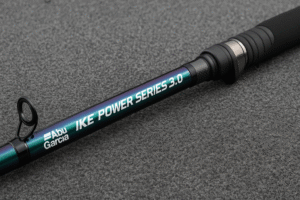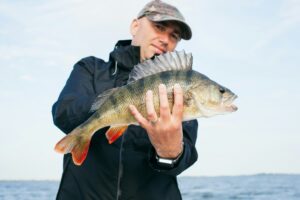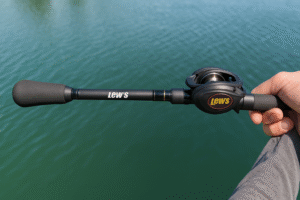Mastering Fly Fishing Techniques
Fly fishing is a dance between angler and nature, where the rhythm of the cast and the grace of the fly define success. In pristine rivers, tranquil lakes, and hidden streams, mastering this art transforms fishing from a hobby into a lifelong passion. The challenge of outsmarting wary trout demands precision, adaptability, and a deep respect for the environment. This guide walks you through the essentials of casting, gear selection, and strategies to help you thrive in diverse fishing conditions.
Learn Everything About the Art of Casting and Fly Fishing Techniques
Fly fishing’s allure lies in its blend of skill and strategy. Unlike traditional fishing, it relies on presenting lightweight artificial flies—imitations of insects or small prey—so naturally that fish mistake them for food. This requires a delicate balance of power and finesse, making casting technique the foundation of every successful fly fishing journey.
The Importance of a Good Casting Technique
A well-executed cast is like whispering to the water—it delivers the fly softly, without alarming the fish. In clear streams, trout are easily spooked by sudden movements or loud splashes. Poor technique can send ripples across the surface, scatter insects, or tangle your line in overhanging branches. Conversely, a smooth, controlled cast allows the fly to drift naturally with the current, mimicking the behavior of real prey.
Accuracy is crucial. Fish often hold in specific spots: behind boulders, along undercut banks, or in the gentle swirls of eddies. Hitting these targets requires practice and patience. Distance also matters, especially in wide rivers or windy conditions. However, longer casts are only effective if they maintain stealth and precision. Beginners often focus on power, but seasoned anglers know that timing and rhythm are the true secrets to a flawless cast.
To build these skills, start with short, simple casts in calm water. Imagine your rod as an extension of your arm, moving in a smooth, continuous motion. Practice stopping the rod at the right angle during forward and backward casts to create tight loops in the line. Over time, these fundamentals become second nature, allowing you to adapt to changing conditions.
Starting Your Trout Fly Casting Journey
Wild brown and rainbow trout are prized targets for fly fishers. Understanding their behavior and preferences is key to success.
Gear Essentials
Choosing the right equipment simplifies the learning curve. A 4-6 weight fly rod is ideal for trout fishing. Lighter rods (4-weight) offer finesse for small streams, while 5-6 weight rods provide versatility for larger rivers or windy days. Pair your rod with a weight-forward floating line, which handles most conditions. Leaders—clear monofilament lines that connect the fly to the main line—should be 9-12 feet long, tapered to blend seamlessly with the water.
Flies are the heart of your setup. Trout feed on mayflies, caddisflies, beetles, and aquatic larvae. A well-rounded fly box includes dry flies (like the Parachute Adams), nymphs (such as the Hare’s Ear), and streamers (like the Woolly Bugger). Local fly shops or guides can recommend patterns matching seasonal hatches in your area.
Reading the Water:
Trout conserve energy by holding in areas where food comes to them. Look for:
Riffles: Shallow, fast-moving water that oxygenates the river and dislodges insects.
Pools: Deeper, slower sections where trout rest and ambush prey.
Undercut Banks: Overhanging vegetation or eroded soil creates shaded hideouts for large trout.
Time your outings to coincide with feeding activity. Early mornings and late afternoons are prime, especially in summer when midday sun drives trout to deeper, cooler water. Spring and autumn offer all-day opportunities, with prolific insect hatches drawing fish to the surface.
Self-Learning vs. Professional Guidance
The path to mastering fly fishing varies. Some anglers thrive on independent exploration, while others benefit from structured lessons.
Self-Learning:
Teaching yourself fly fishing offers freedom and flexibility. Online tutorials, books, and forums provide a wealth of knowledge. Practicing in local parks or ponds allows you to experiment without pressure.
However, self-learners risk developing habits that hinder progress, like an inefficient grip or mistimed casts. Without feedback, these issues can become ingrained, slowing improvement.
Professional Guidance:
Hiring a guide or taking lessons accelerates learning. Experts share insights on hidden fishing spots, seasonal patterns, and effective fly selections.
They’ll correct your technique in real time, helping you avoid common pitfalls. Guided trips also introduce you to safe wading practices and ethical fishing principles, crucial for preserving fragile ecosystems.
While this approach requires investment, the rewards—refined skills and unforgettable experiences—are often worth the cost.
A balanced approach works well: Begin with online resources to grasp basics like knot-tying and casting mechanics, then invest in a half-day lesson to refine your technique. As confidence grows, join a local fly fishing club or attend workshops to connect with fellow anglers.
Top Three Casting Tips to Improve Your Success
Many rivers are lined with dense vegetation, leaving little room for traditional backcasts. The roll cast solves this problem.
To execute it, lift your rod tip to form a “D-loop” of line behind you, then sweep the rod forward in a smooth, accelerating motion.
This technique uses the water’s surface tension to load the rod, propelling the line forward without needing space behind you. Practice in slow-moving water until the motion feels natural.
Observe and Adapt:
Successful fly fishing hinges on imitation. Before casting, watch the water for rising fish or insect activity. Are mayflies fluttering above the surface? Is a caddisfly hatch underway? Match your fly size, color, and behavior to the natural prey. If fish ignore your offering, experiment with different patterns or adjust your retrieve speed. Patience and observation often yield better results than constant casting.
Prioritize Stealth:
Trout have exceptional vision and lateral lines sensitive to vibrations. Approach the water quietly, wearing neutral-colored clothing to blend into the surroundings. Stay low to avoid casting shadows over pools, and wade slowly to prevent disturbing the streambed. When casting, aim to land the fly a few feet upstream of the target, allowing it to drift naturally into the trout’s feeding lane.
Fly fishing is more than a sport—it’s a journey into the heart of wild landscapes, where every cast teaches patience and every catch rewards perseverance. Whether you’re standing in the golden light of a highland lake or exploring a secluded river bend, the beauty and challenge of the water deepen your connection to nature. Embrace the learning process, celebrate small victories, and let the rhythm of the river remind you that fly fishing is not just about catching fish, but about becoming part of the natural world.
Ready to Start Your Fly Fishing Adventure?
The waters await. Pack your gear, study local hatch charts, and set out to explore mountain streams, serene lakes, or hidden rivers. Remember, every outing is an opportunity to learn. With time, dedication, and respect for the environment, you’ll unlock the timeless joy of fly fishing—one cast at a time.





